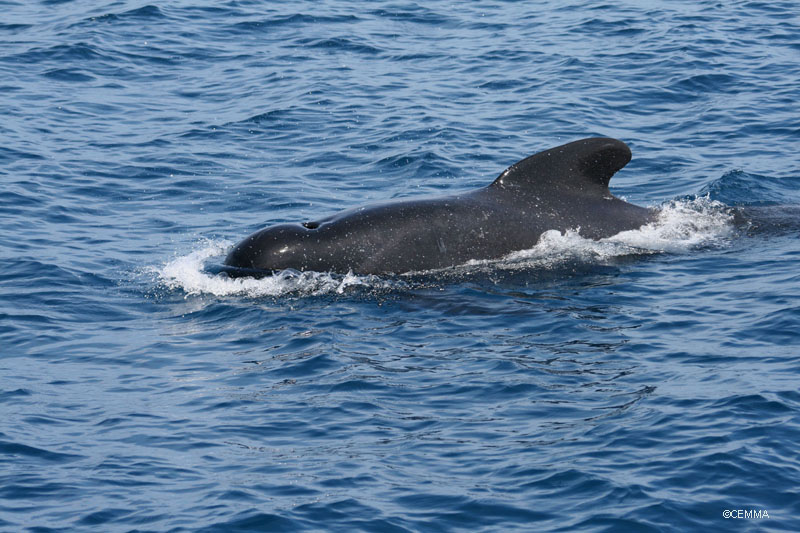You are here
Cañón de Avilés - April Campaign - CEMMA
CEMMA carried out a sampling of marine mammals in the Cañón de Avilés on board the B/O “Vizconde de Eza” during the IEO’s INDEMARES Avilés 0410 Campaign.
The marine mammal sampling was carried out by two biologists from the CEMMA who worked individually, each one taking part in one of the two parts the campaign was divided into. Xesús Morales López was on board during the first part of the campaign (19?29 April) and José Martínez Cedeira during the second part (30 April-13 May).
The sighting post from where the sampling was carried out was the crow’s nest, 25 metres above sea level. In spite the visibility being good in the crow’s nest, whenever possible, observation work was carried out outside, from a small shelf at the front to have a complete field of vision of 180º, to eliminate visual obstacles.
The main marine mammal sampling technique carried out during the campaign consisted of making observation transects along the acoustic radials. These transects were carried out from 07:20 to 21:10 h., according to the visibility and atmospheric conditions, the state of the sea and the carrying out of the sampling stations with the sledge and the rock dredges and box corer.
During the observation transects, the cetacean observers carried out observation periods, making continuous visual scans of 180° (starboard?bow?port) with observation optics for visual cetacean detection. These observation periods were only carried out when the state of the sea and visibility conditions were suitable for detecting marine mammals. During these periods, all the observation transect data (time, position, speed and course of the boat) were continuously recorded by the GPS. Furthermore, the following information on the observation conditions was collected every 20 minutes: state of the sea (Douglas 0 to 9), wind direction and force (Beaufort 0 to 12), visibility (0 to 5), observation field width (m) and depth (m). The following information was collected each time a sighting was made: time, position, depth, distance, angle, species, number of individuals, presence of babies, behaviour and duration of the sighting. Whenever possible, photographs of the sighting were made.
During the 24 hours the campaign lasted, it was possible to carry out an observation for the visual detection of cetaceans throughout 21 days, which represents 91% of the total of the days aboard. On the 3 remaining days, all corresponding to the second part of the campaign, the state of the sea conditions made it impossible to carrying out the cetacean sampling.
87 observation periods were carried out along 2013 kilometres of transects during 119 hours of observation. 25 systemic sightings of six species of cetaceans were registered during the observation transects. bottlenose dolphin, striped dolphin, common dolphin, common porpoise, black pilot whale, killer whale and non-identified cetaceans.
In addition to the observation work carried out during the transects, the observers also carried out observation stations during the sampling stations with the box corer dredge. In this case, the methodology was similar to that carried out during the observation transects, with the difference that during the observation stations the boat was totally stopped and the entire horizon was observed, in other words, with a cover of 360º. Throughout the observation stations, one sighting of bottlenose dolphins was recorded, a species that had already been detected during the observation transects.
In addition to the 26 systematic cetacean sightings recorded during the transects and observation stations, opportunistic sightings were made, outside the sampling work, where bottlenose dolphin, black pilot whale and sperm whale were observed. Both the bottlenose dolphin and the sperm whale are species that had already been registered during the transects and observation stations, but this opportunistic sighting of sperm whale is the only recording of the species during the entire campaign.











